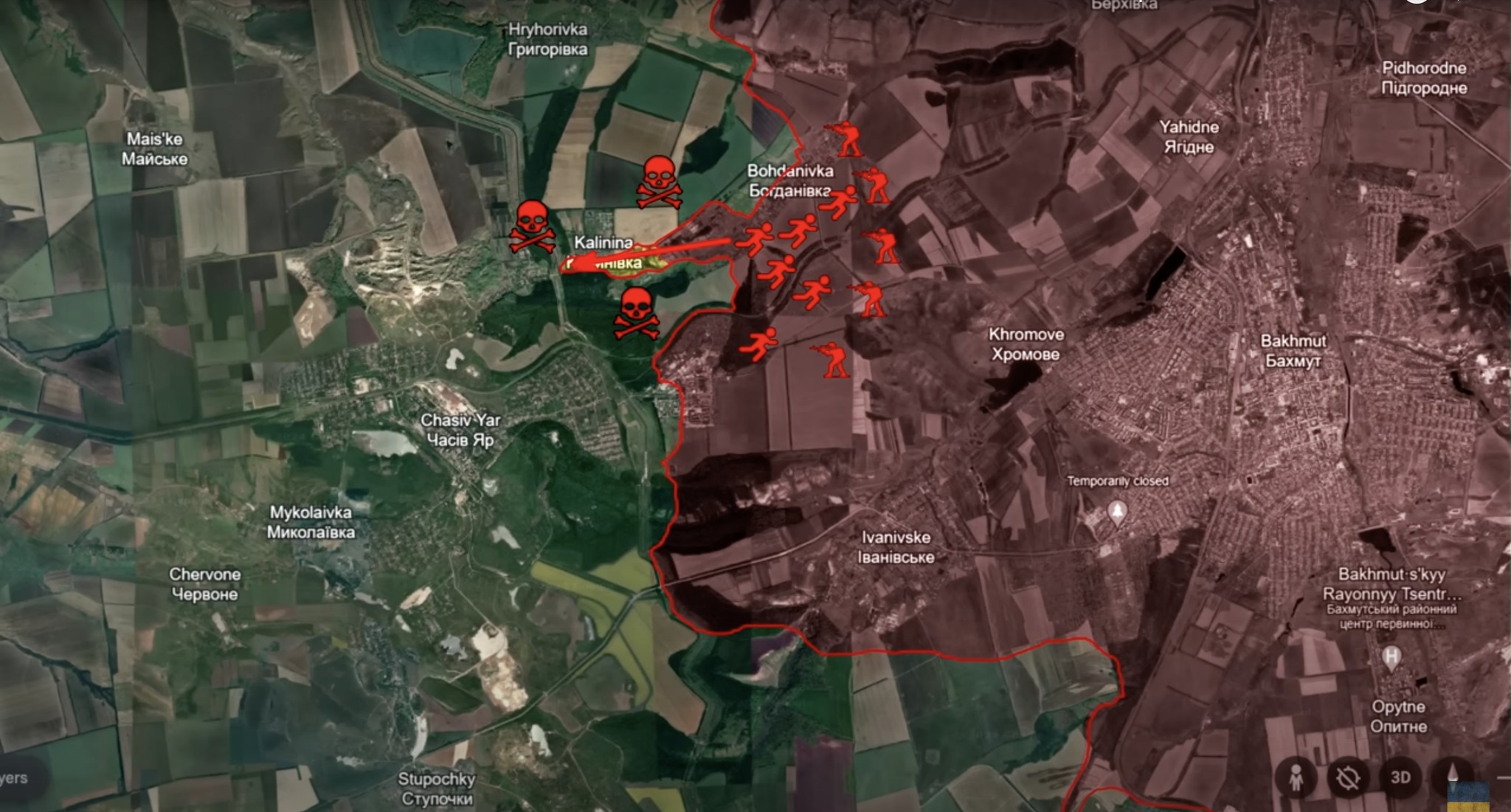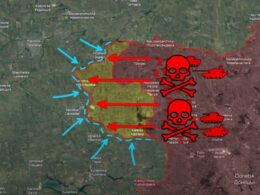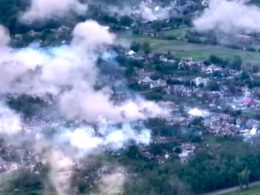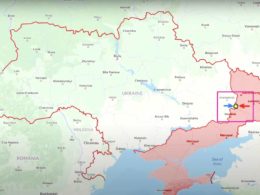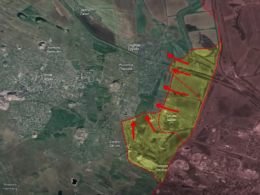Today, there are a lot of updates from the Bakhmut direction, Donetsk Oblast.
The most interesting updates come from the northern flank of Chasiv Yar. Here, the Russians intensified their assaults towards Kalynivka to directly attack the center of Chasiv Yar from the north.
However, the Ukrainians were readily awaiting these assaults, and so the Russians failed to advance and incurred losses so serious that they had to halt their attacks altogether and make an operational pause.
The Russian forces aim to establish control over Kalynivka to utilize the canal crossing for further assaults on Chasiv Yar. If the Russians effectively exploit this advance, they would avoid crossing the canal from the Kanal district. Instead, attacking the town center from the northern crossing near Kalynivka could prove more efficient.
Assault on Kalynivka village

The Russian assaults on Kalynivka were preceded by an intense artillery barrage, augmented by glide bomb strikes, resulting in the destruction of most of the village. With no buildings left to use as firing positions, Ukrainian fighters withdrew to more favorable positions west of the canal. Subsequently, Russian troops advanced along Lisova Street, reaching the canal crossing.
Destroying all buildings in eastern Kalynivka proved to be a double-edged sword for the Russians. The destruction eliminated any possibility of concealing and protecting their troops from Ukrainian artillery, tank, and drone strikes. As a result, Russian forces were forced to move across open areas, leading to their rapid destruction.
Russian losses and low morale
Combat footage from the area shows us how a sole Ukrainian tank managed to destroy a group of Russian troops that were heading to the canal crossing in conjunction with kamikaze drone strikes against the same group.
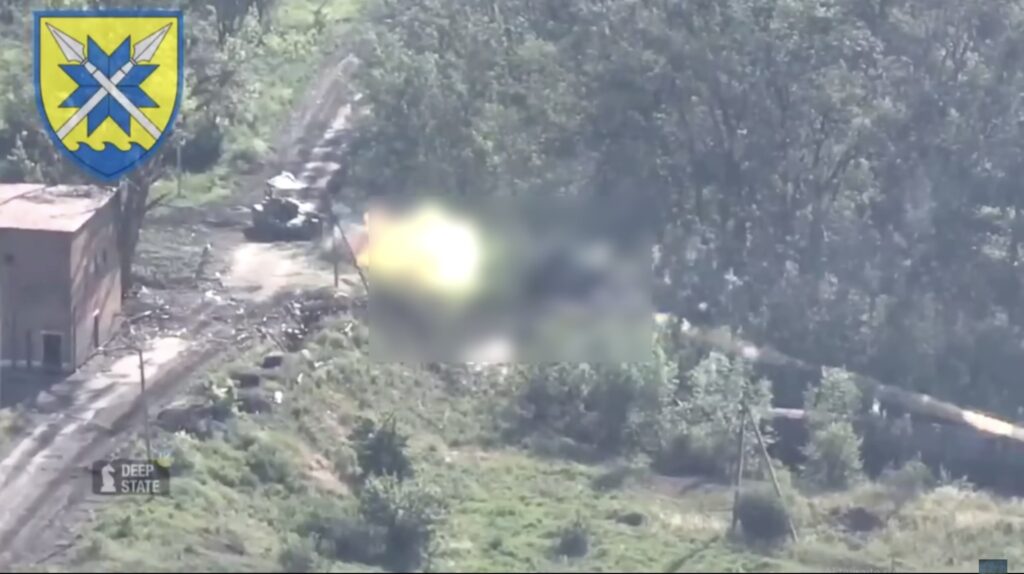
Another video shows a Russian BMP loaded with infantry being hit at the ammo rack, resulting in a devastating explosion that killed everyone on board. The detonation was so severe that three other nearby vehicles in the column were also damaged by the blast and subsequently abandoned, with most of the troops killed. The only survivor among the Russian stormtroopers suffered severe burns over his body and subsequently lost consciousness.
Due to significant losses with little to no gains, Russian army morale in this area is very low. This has led the Russian command to set up barrier troops to kill deserters or capture them and send them back to the deadly frontline positions.

Facing a shortage of motivated personnel and struggling to command mostly demotivated troops, Russian commanders deploy only small groups of infantry for assaults. Another reason for this tactic is the heavy losses in equipment and troops during larger assaults, where Russian forces lose between forty and seventy percent of their equipment.
Ukrainian fighters in the area are using up to fifty drones daily to hit twenty-five Russian targets, primarily targeting Russian armored assault formations attempting to advance.
Decrease in Russian weapons and equipment
Trending Now
A Russian Storm-Z instructor claimed that Russian forces made their most significant gains in Chasiv Yar, Avdiivka, and Ocheretyne through attritional frontal assaults, air strikes, and artillery without any advances on the flanks. These assaults resulted in the loss of a significant number of armored vehicles during intensified mechanized operations.
Deputy Head of the Presidential Office, Roman Mashovets, stated that the number of available tanks for Russian forces in the Chasiv Yar, Siversk, and Kurakhove directions has significantly decreased to six hundred and fifty tanks. He also noted that the number of combat-ready armored fighting vehicles is now just one thousand eight hundred and fifty.
For context, Russians have lost over fifteen thousand armored vehicles and eight thousand tanks since the start of the war, with around a dozen of each lost daily. This indicates that the current assault force can only last for a few months before being exhausted and withdrawn from battle.
High casualties among Russian troops
Russian sources reported that Russian infantry are essentially forced to conduct dismounted assaults west of Bakhmut despite heavy Ukrainian drone operations. Some Russian infantry only receive a week and a half of training before deploying to Bakhmut, contributing to significant Russian losses.
This type of mass frontal assault was intense throughout the entire Russian offensive. Due to this high-casualty method of attack, the Russian command eventually exhausted their forces in some directions, including Chasiv Yar.
As a result, the elite Russian ninety-eight Airborne Division, often used as the spearhead of assaults in this area, lost its combat capability and was withdrawn for replenishment.

After failed assaults near Kalynivka, the Russians have finally exhausted the offensive potential of their most potent units. This has led to the withdrawal of these forces for replenishment, creating a window of opportunity for the Ukrainians to exploit this gap and launch counterattacks to push the Russians back to their original positions.
In our regular frontline report, we pair up with the military blogger Reporting from Ukraine to keep you informed about what is happening on the battlefield in the Russo-Ukrainian war.

